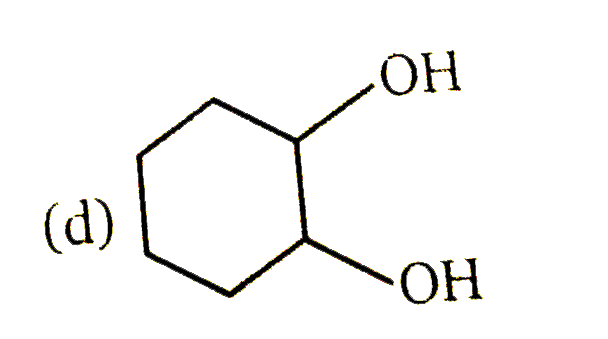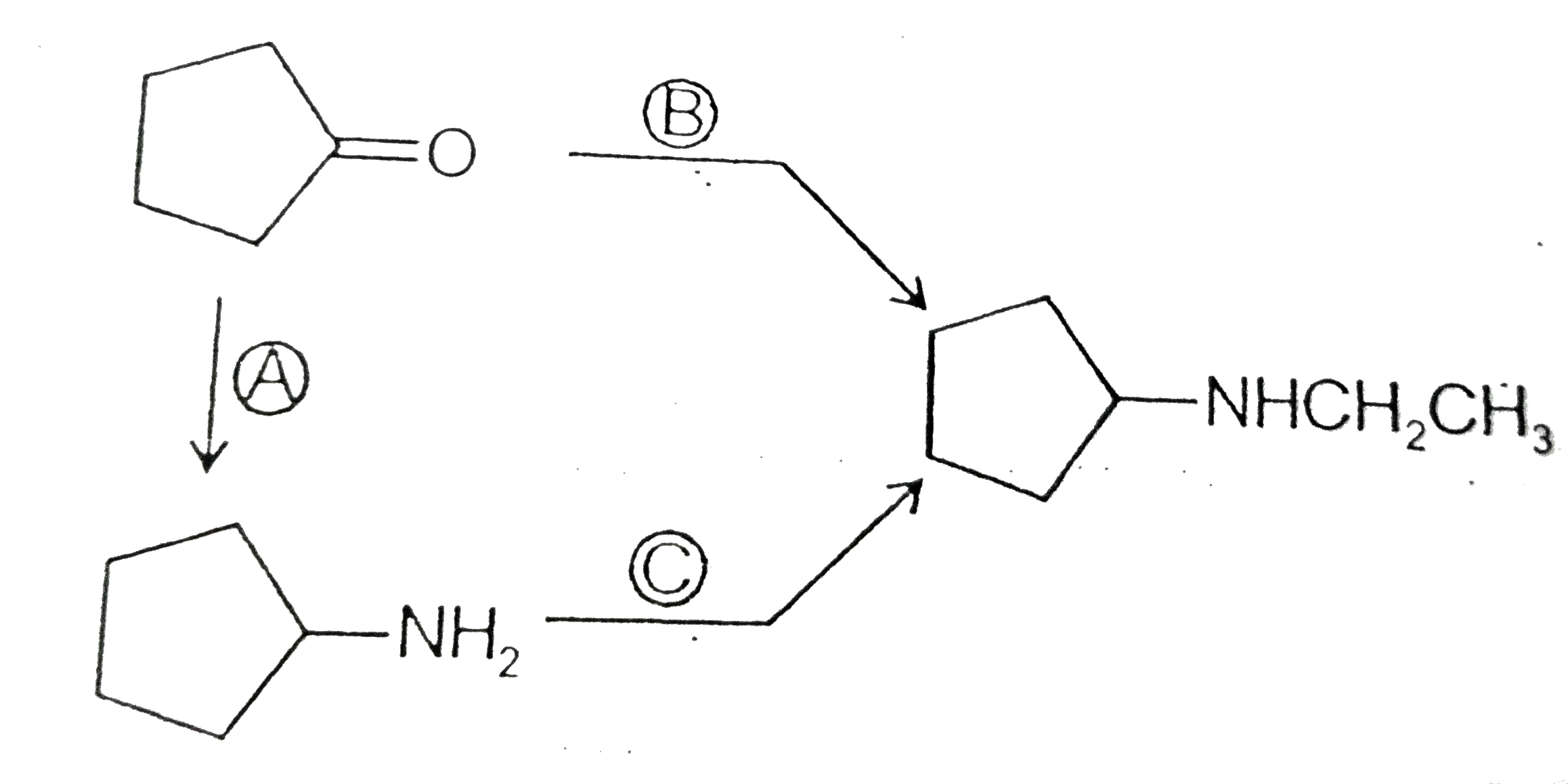During an experimental workup procedure, a chemist treated a starting material with NaoH in the solvent acetone [(CH3)2C=O], however, the starting material was recovered unreacted. Instead, the chemist isolated a small amount of product A (shown below).
Product A
1. Elemental analysis of product A indicated that it consisted only of carbon, hydrogen, and oxygen.
2. Product A had a molecular weight of 116 g/mol.
3. Product A was a methyl ketone because it gave a positive iodoform test.
4. When product A was treated with Br2 in CCl4, the red bromine colour persisted, because no carbon-carbon double bonds were present to react with the bromine.
The structure of product A was further confirmed when treatment with hot sulfuric acid resulted in the corresponding dehydration product, product (B)gt
Q. What is the molecular weight of a compound that undergoes an aldol self-condensation reaction to result in a β-hydroxy ketone with a molecular weight of 144?
70g/mol
72g/mol
74g/mol
76g/mol
The correct Answer is:B
 .
.
Topper's Solved these Questions
- BOOK - MS CHOUHANCHAPTER - ALDOL AND CANNIZARO REACTIONEXERCISE - Level 1 (Q.1 To Q.30)6videos
ALDOL AND CANNIZARO REACTION
- BOOK - MS CHOUHANCHAPTER - ALDOL AND CANNIZARO REACTIONEXERCISE - Level 1 (Q.31 To Q.48)3videos
ALDOL AND CANNIZARO REACTION
- BOOK - MS CHOUHANCHAPTER - ALDEHYDES AND KETONES II. ALDOL REACTIONS EXERCISE - ADDITIONAL OBJECTIVE QUESTIONS (LINKED COMPREHENSION TYPE )6videos
ALDEHYDES AND KETONES II. ALDOL REACTIONS
- BOOK - MS CHOUHANCHAPTER - ALKENES AND ALKYNES IIEXERCISE - ADDITIONAL OBJECTIVE QUESTIONS (Matrix Match Type)2videos
ALKENES AND ALKYNES II
Similar Questions
Knowledge Check
- Question 1 - Select One
During an experimental workup procedure, a chemist treated a starting material with NaoH in the solvent acetone [(CH3)2C=O], however, the starting material was recovered unreacted. Instead, the chemist isolated a small amount of product A (shown below).
Product A
1. Elemental analysis of product A indicated that it consisted only of carbon, hydrogen, and oxygen.
2. Product A had a molecular weight of 116 g/mol.
3. Product A was a methyl ketone because it gave a positive iodoform test.
4. When product A was treated with Br2 in CCl4, the red bromine colour persisted, because no carbon-carbon double bonds were present to react with the bromine.
The structure of product A was further confirmed when treatment with hot sulfuric acid resulted in the corresponding dehydration product, product (B)gt
Q. Wihch of the following compounds from the passage will give a positive iodoform test.?AProduct A onlyBProduct A and product BCProduct A and acetone onlyDProduct A, product B, and acetone. - Question 2 - Select One
During an experimental workup procedure, a chemist treated a starting material with NaoH in the solvent acetone [(CH3)2C=O], however, the starting material was recovered unreacted. Instead, the chemist isolated a small amount of product A (shown below).
Product A
1. Elemental analysis of product A indicated that it consisted only of carbon, hydrogen, and oxygen.
2. Product A had a molecular weight of 116 g/mol.
3. Product A was a methyl ketone because it gave a positive iodoform test.
4. When product A was treated with Br2 in CCl4, the red bromine colour persisted, because no carbon-carbon double bonds were present to react with the bromine.
The structure of product A was further confirmed when treatment with hot sulfuric acid resulted in the corresponding dehydration product, product (B)gt
Q. Based only on observation 1 and 2, which of the following compounds could have been product A?ACH3C∣CH3HCH2CH2CH2CH2CH3BCH3O∣∣CCH2OH∣CHCH2CH2CH3.CCH2=CHCH2−O−CH2CH2CH3D
- Question 3 - Select One
During an experimental workup procedure, a chemist treated a starting material with NaoH in the solvent acetone [(CH3)2C=O], however, the starting material was recovered unreacted. Instead, the chemist isolated a small amount of product A (shown below).
Product A
1. Elemental analysis of product A indicated that it consisted only of carbon, hydrogen, and oxygen.
2. Product A had a molecular weight of 116 g/mol.
3. Product A was a methyl ketone because it gave a positive iodoform test.
4. When product A was treated with Br2 in CCl4, the red bromine colour persisted, because no carbon-carbon double bonds were present to react with the bromine.
The structure of product A was further confirmed when treatment with hot sulfuric acid resulted in the corresponding dehydration product, product (B).
Q. When a drop of Br2 in CCl4 is added to product B, the resulting solution will ewAcolourless, because product B does not contains a carbon-carbon double bond.Bcolourless, because product B contians a carbon-carbon double bondCred, because product B does not contain-carbon double bond.Dred, because product B contains a carbon-carbon double bond.
During an experimental workup procedure, a chemist treated a starting material with NaoH in the solvent acetone [(CH3)2C=O], however, the starting material was recovered unreacted. Instead, the chemist isolated a small amount of product A (shown below).
Product A
1. Elemental analysis of product A indicated that it consisted only of carbon, hydrogen, and oxygen.
2. Product A had a molecular weight of 116 g/mol.
3. Product A was a methyl ketone because it gave a positive iodoform test.
4. When product A was treated with Br2 in CCl4, the red bromine colour persisted, because no carbon-carbon double bonds were present to react with the bromine.
The structure of product A was further confirmed when treatment with hot sulfuric acid resulted in the corresponding dehydration product, product (B)gt
Q. The aldol self-condensation of acetone is an equilibrium that favours acetone over its condensation product. which of the following experimental modifications is most likely to shift the position of equilibrium towards product A?View SolutionWhen SO3 is treated with D2O, the products are :
View SolutionWhat are the starting materials to get 2-methylpropene as the major product?
View SolutionWhen glycerol is treated with a small amount of HI or PI3, the product obtained is:
View SolutionWhen ethylamine is treated with CH3MgBr, the product is:
View Solution


